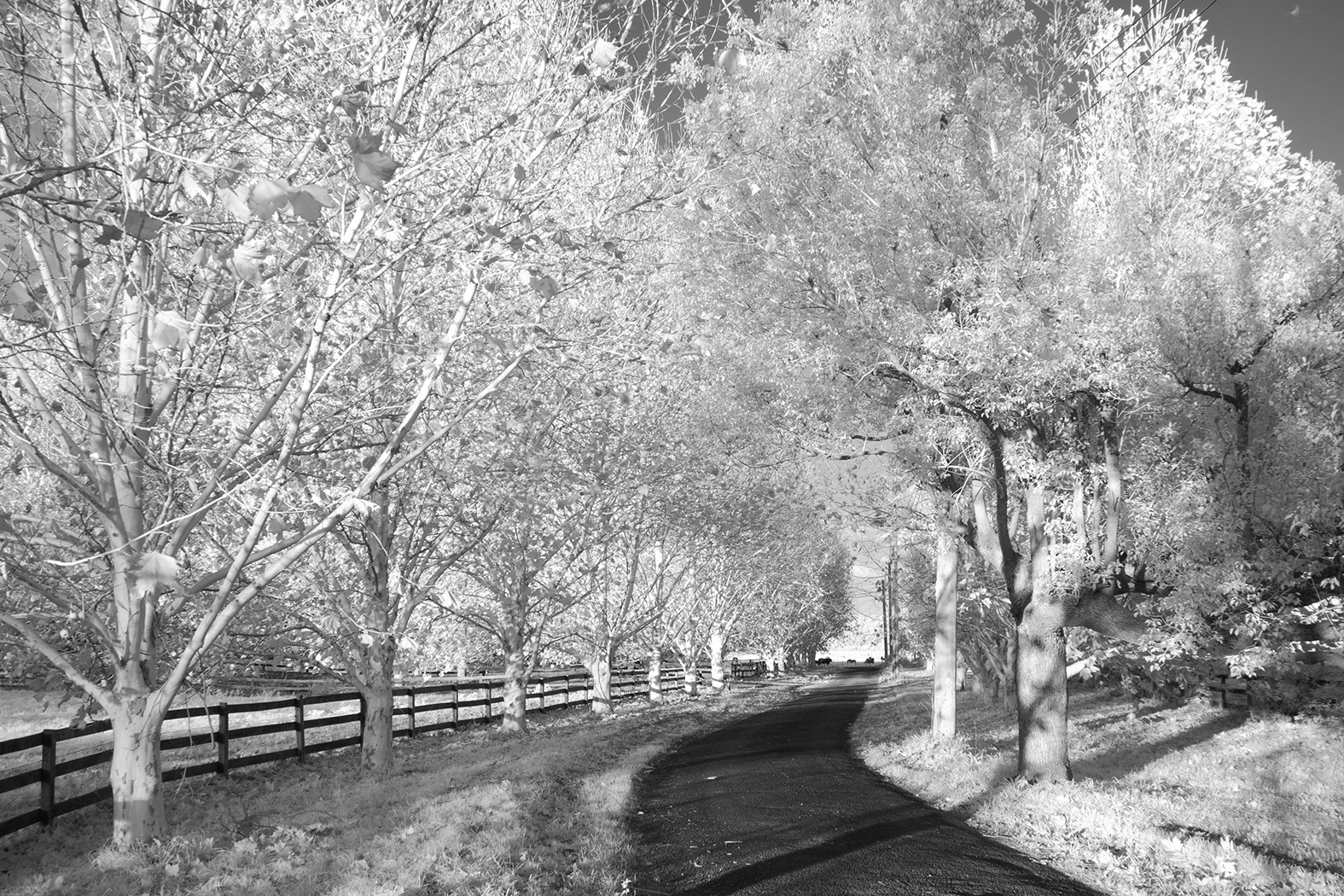Ian Cambourne
About the Image(s)
As mentioned previously, one of my favourite photographic genres in Infrared. A friend phoned me one afternoon last month to say the conditions were right for a couple of hours shooting some IR photos. And then the obligatory cold refreshing ale in a suitable establishment afterwards. Who am I to knock back such a fine suggestion. This was taken just 15 minutes from home in our Richmond Lowlands area. Details are: Nikon D200 (converted for IR); Nikon 24-120 @ 24mm; ISO 100 F8 & 1/30.
9 comments posted
A lot of my friends have gotten into infrared. Until this photo it never grabbed me. So what makes this such a good infrared subject? It's a beautiful shot. Posted: 07/17/2025 18:41:40
Thanks for your comments Sanford. In my humble mind and thinking, the basic ingredients for a good IR photo are 1. a blue sky which goes black in the image, 2. pale green foliage which renders as white in the image (note that dark green foliage still retains shades of grey), 3. white clouds "may" loose their texture and details, becoming just white featureless blobs, and that "other element" in the scene to add some interest. I acknowledge the sky top right is not as black as it could be, but it is what it is. Posted: 07/24/2025 02:10:03
Ian, a nice venture into an interesting niche. An IR image benefits from the same tonal strengths b&w images do. You have a black road (leading line), a grey grass area, and white in the higher tree crowns. Just like other landscapes, I believe you should crop the image from the top so the sky does not show. I would also burn the far sky at the end of the road for more contrast within the image, creating something for the eye to be drawn to. Posted: 07/18/2025 15:02:27
Thanks for your comments Trey. Posted: 07/24/2025 02:11:41
There are leading lines that draw one into the image and the vertical lines of the trees frame the image thus casting long shadows from the tree trunks across the road from the afternoon sun. Darkening the sky in the. upper right would add more contrast thus enhancing the lightness of the trees. Nice image, Ian. Posted: 07/23/2025 23:56:19
Thanks for your comments Henriette. I'm learning new processing skills, one of which is selective adjustments as opposed to global adjustments. Watch this space in the near future. Posted: 07/24/2025 02:13:11
Beautiful image Ian. I am not very familiar with infrared. Is it a special camera or is it a post processing thing? Great leading lines throughout the image, trees, fence, road, and grass. Well done. Posted: 07/24/2025 23:40:18
To answer your question Jay, all digital sensors can detect infra-red radiation (basically radiated heat). However the human eye cannot see those wavelengths, so to match the sensor to the eye, camera manufacturers place an Infra Red filter over the top of the sensor to cut out those wavelengths. It is possible to remove that filter, to produce an infra red camera, then use a filter in front of the lens to cut out 'normal' light. The result is the type of image Ian produced, basically picking up heat rather than light. Posted: 07/28/2025 13:42:31
Infra red gives a landscape a very different look, sometimes it works and can look stunning and sometimes I am left thinking that a good mono image would look better. The 'rules' of composition still apply however and I find my eye wanting to follow the path rather than look at the jumble of leaves. So I would suggest a crop left, right and down, to make the path more central and dominant, and by cropping tighter I think it would give a better balance between path and trees. A good location to experiment though. Posted: 07/28/2025 13:36:51
